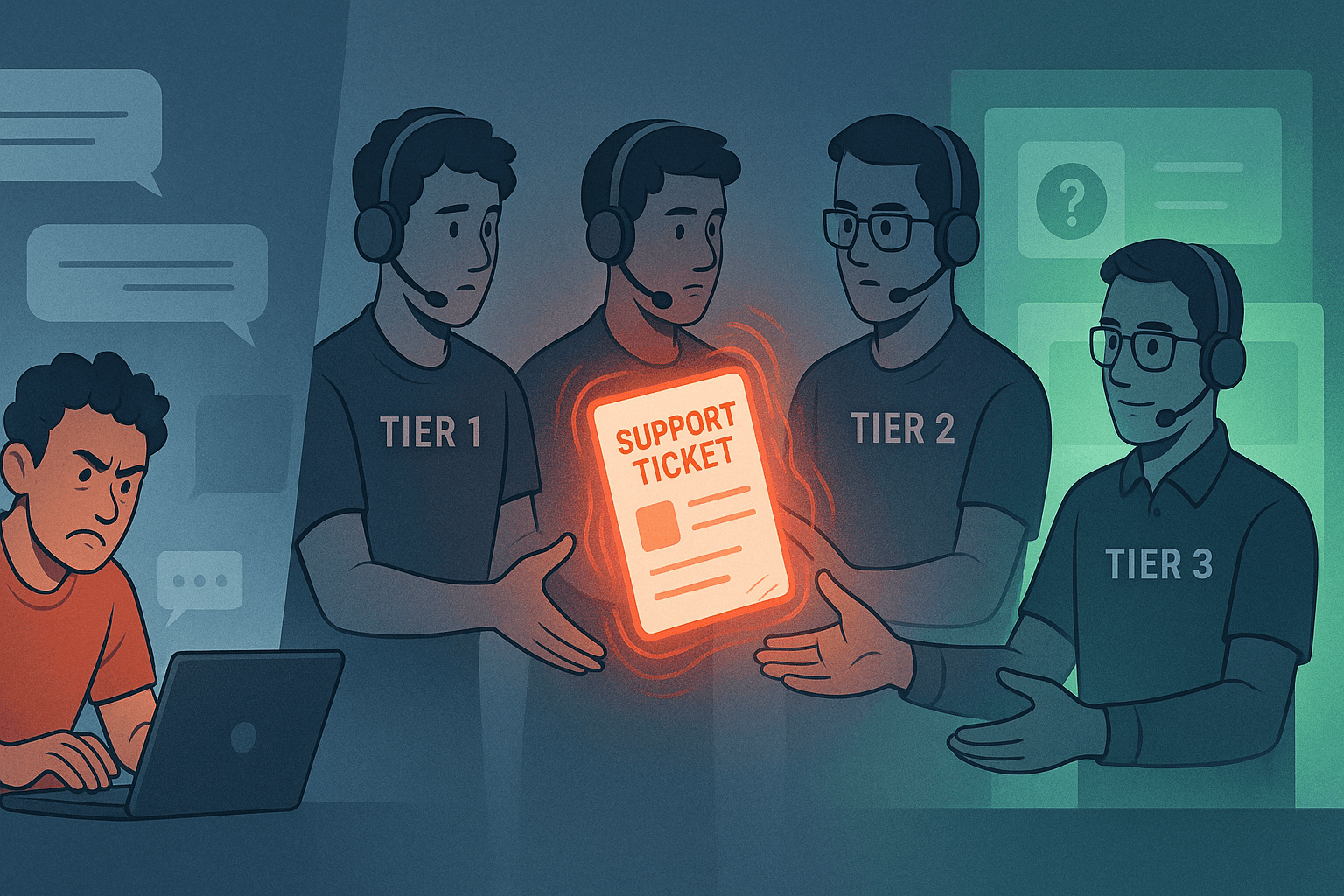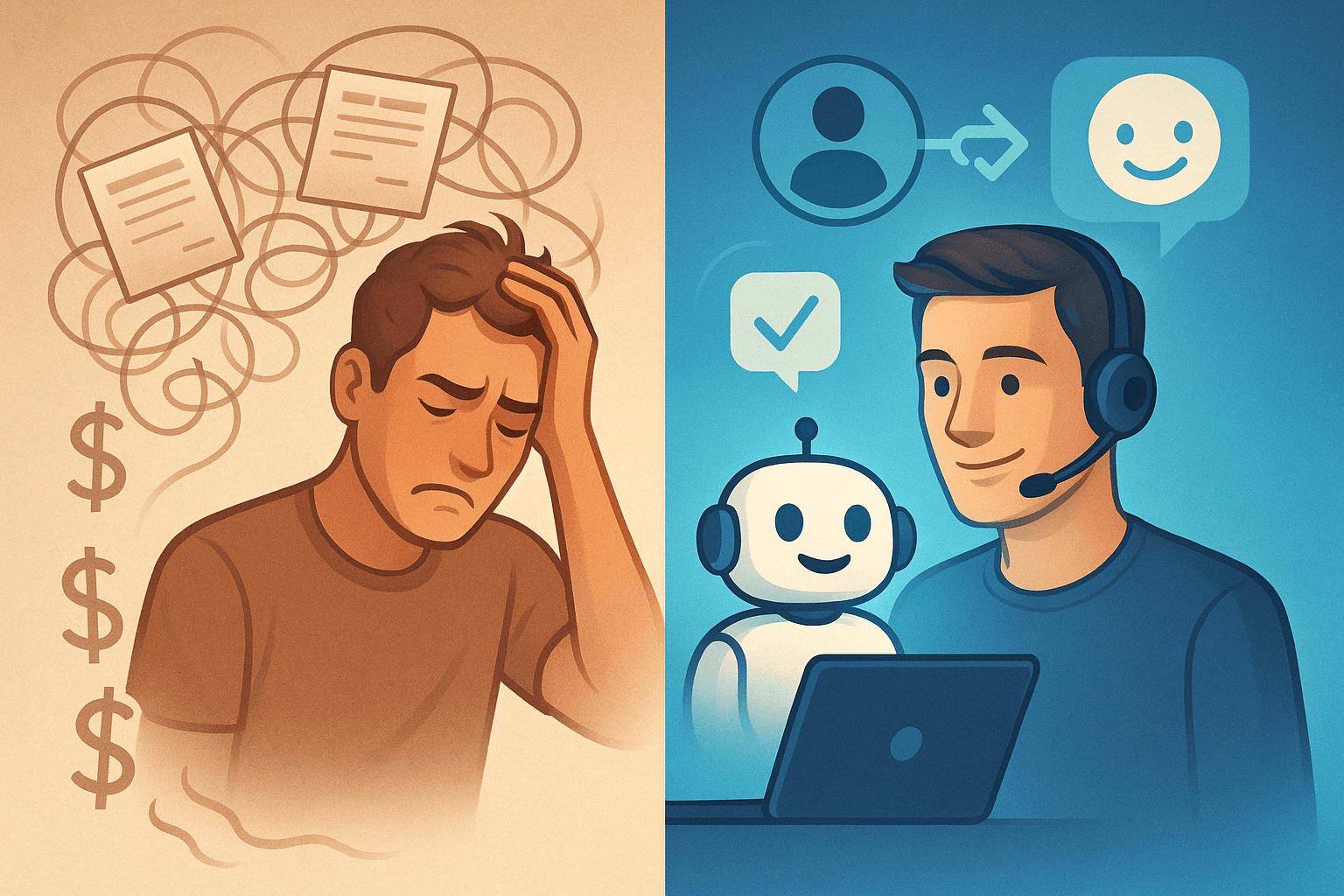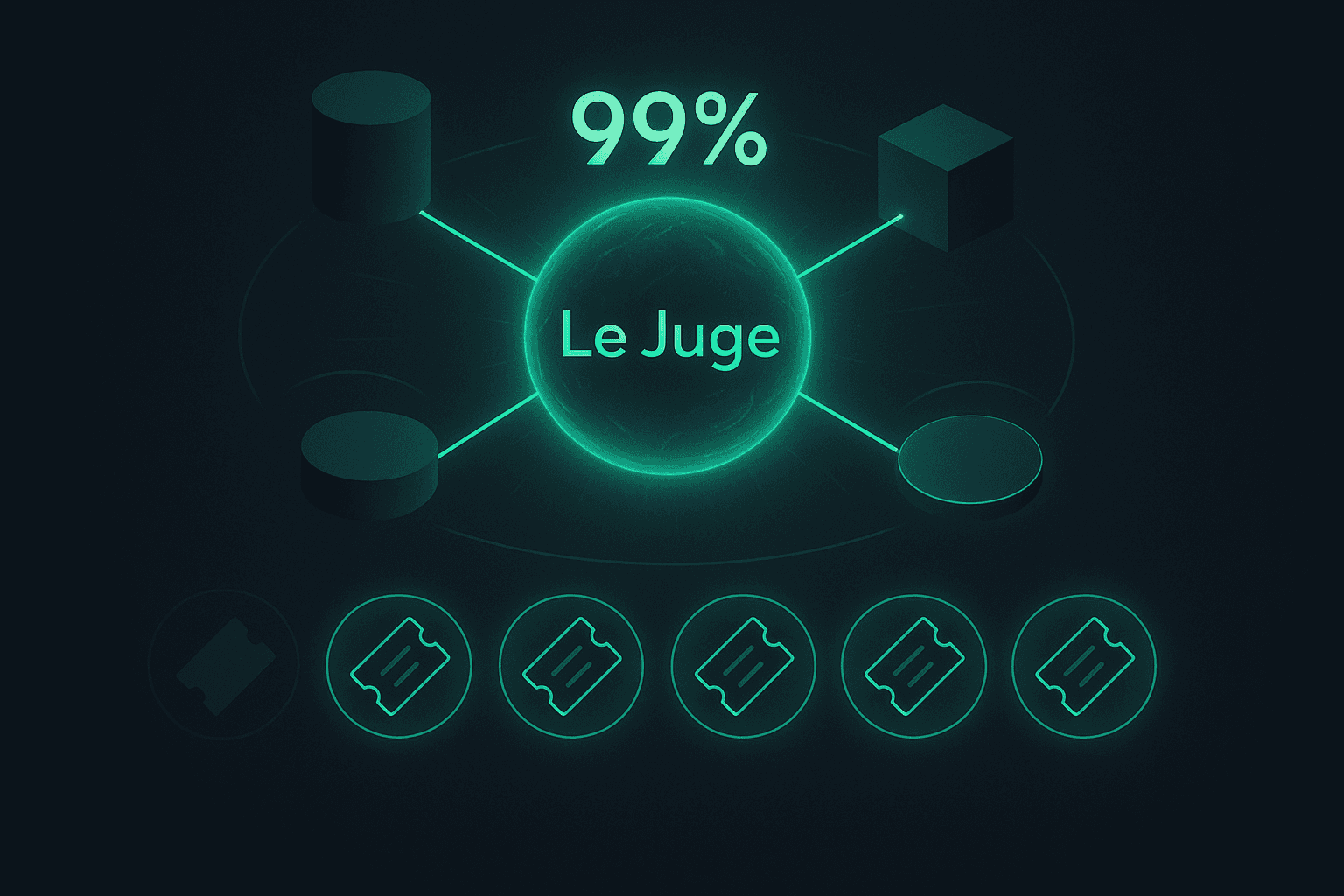Glossary
Why Escalations Are Killing Customer Support Budgets
Escalation in customer support quietly multiplies costs and churn. Learn why it happens, its hidden price tag, and how Quivr slashes unnecessary hand‑offs.
Content
Jul 3, 2025


The phone rings for the third time this week. Same customer, same shipping glitch, same agent apology—followed by the inevitable: “I’m escalating this to a specialist.” Sound familiar? Escalation in customer support was meant to protect customers from dead ends; instead, it often traps them in an expensive relay race. What if every needless hand‑off is quietly draining millions from your P&L—and eroding loyalty you can’t afford to lose?
The Illusion of Automation Savings
Automation promises lower headcount and lightning‑fast answers. But when chatbots and macros fail to solve for nuance, tickets bounce uphill. Industry blogs peg average escalation rates between 10 % and 20 % of total volume, a figure that swells as complexity rises.
“We launched a bot to cut costs but saw Tier 2 volume spike 18 % in the first quarter.” —CX Director, logistics firm
Hidden costs of each hand‑off
Longer handle time (extra context gathering)
Higher‑paid specialists engaged
Duplicate effort on documentation
Increased risk of SLA breach penalties
Lower first‑contact resolution, driving re‑open rates
Bridge: If automation isn’t the villain, where exactly does the process crack?
Where Traditional Chatbots Fall Apart
Most bots parse keywords, not intent. They miss emotion, ignore history, and can’t query back‑office APIs. Zendesk’s own playbook defines escalation as the moment front‑line agents can’t progress an issue, a moment that arrives quickly when the bot “doesn’t understand.”
Key failure modes:
Context blindness – customer must repeat the same details.
Rigid flows – stray from the script, and resolution stalls.
No data bridges – can’t fetch order status, warranty info, or policy exceptions.
Deflection mindset – designed to keep humans away, not solve problems.
When the system throws up its virtual hands, the burden lands back on the customer, and the CFO’s ledger.
Bridge: So how big is that financial dent?
The Real Business Cost of Escalations
Escalations aren’t just workflow noise; they’re measurable liabilities.
Cost per ticket balloons. Specialist labor plus longer talk time can push cost to 2–3× a first‑touch resolution
Customer Effort Score tanks loyalty. Qualtrics found that 94 % of low‑effort experiences drive repeat business, while 96 % of high‑effort ones trigger churn . Escalation is the textbook definition of “high effort.”
Brand damage amplifies online. Social posts griping about “eight transfers later” gain traction 38 % faster than positive stories.
Agent morale sinks. Specialists become fire‑fighters; Tier 1 agents feel powerless—feeding turnover and rehiring costs.
Bridge: If escalations hurt so much, what does great support look like?
What Great Support Actually Looks Like
High‑performing teams treat escalation as the exception, not the norm.
Principle | Operational Reality |
|---|---|
Own the issue | First agent empowered to solve or route instantly |
Preserve context | All historical data surfaces automatically |
Minimize customer effort | One conversation, no repeat storytelling |
Measure honesty | Track true repeat‑contact rates, not “agent resolved” flags |
Continuous learning | Every miss feeds root‑cause analysis |
Bulletproof processes reduce escalations in three ways:
Skills‑based routing at the first touch.
Real‑time knowledge surfacing so agents answer confidently.
Clear empowerment thresholds (refunds up to $100, policy overrides) that ditch “manager approval theatre.”
Bridge: Can technology actually deliver this, without more bloatware?
How Quivr Rewrites the Playbook
At Quivr, we approached escalation pain from the ground up.
Context That Travels With the Ticket
Our retrieval‑augmented generation (RAG) layer ingests historical tickets, knowledge bases, and live backend data. Agents—and our AI—see a unified timeline, so no one asks the customer to repeat themselves.
Smart Boundaries, Not Brick Walls
Quivr’s assistant handles routine queries but knows when it’s out of its depth. It escalates with full conversation history and recommended answers, cutting specialist handle time for a global retailer.
Data‑Driven Quality Control
Every auto‑drafted or agent‑sent reply flows through Le Juge, our evaluation engine. It flags risk factors (tone, compliance, accuracy) before the customer ever sees them, preventing mis‑escalations.
Results Clients Can Verify
Escalation rate drop
Customer Effort Score improvement
Conclusion
Escalations aren’t just bumps—they’re black holes swallowing profit, loyalty, and morale. In a market where every dollar and every customer counts, accepting the status quo is a luxury you can’t afford.
Similar Blogs
Glossary
Why Escalations Are Killing Customer Support Budgets
Escalation in customer support quietly multiplies costs and churn. Learn why it happens, its hidden price tag, and how Quivr slashes unnecessary hand‑offs.
Jul 3, 2025

The phone rings for the third time this week. Same customer, same shipping glitch, same agent apology—followed by the inevitable: “I’m escalating this to a specialist.” Sound familiar? Escalation in customer support was meant to protect customers from dead ends; instead, it often traps them in an expensive relay race. What if every needless hand‑off is quietly draining millions from your P&L—and eroding loyalty you can’t afford to lose?
The Illusion of Automation Savings
Automation promises lower headcount and lightning‑fast answers. But when chatbots and macros fail to solve for nuance, tickets bounce uphill. Industry blogs peg average escalation rates between 10 % and 20 % of total volume, a figure that swells as complexity rises.
“We launched a bot to cut costs but saw Tier 2 volume spike 18 % in the first quarter.” —CX Director, logistics firm
Hidden costs of each hand‑off
Longer handle time (extra context gathering)
Higher‑paid specialists engaged
Duplicate effort on documentation
Increased risk of SLA breach penalties
Lower first‑contact resolution, driving re‑open rates
Bridge: If automation isn’t the villain, where exactly does the process crack?
Where Traditional Chatbots Fall Apart
Most bots parse keywords, not intent. They miss emotion, ignore history, and can’t query back‑office APIs. Zendesk’s own playbook defines escalation as the moment front‑line agents can’t progress an issue, a moment that arrives quickly when the bot “doesn’t understand.”
Key failure modes:
Context blindness – customer must repeat the same details.
Rigid flows – stray from the script, and resolution stalls.
No data bridges – can’t fetch order status, warranty info, or policy exceptions.
Deflection mindset – designed to keep humans away, not solve problems.
When the system throws up its virtual hands, the burden lands back on the customer, and the CFO’s ledger.
Bridge: So how big is that financial dent?
The Real Business Cost of Escalations
Escalations aren’t just workflow noise; they’re measurable liabilities.
Cost per ticket balloons. Specialist labor plus longer talk time can push cost to 2–3× a first‑touch resolution
Customer Effort Score tanks loyalty. Qualtrics found that 94 % of low‑effort experiences drive repeat business, while 96 % of high‑effort ones trigger churn . Escalation is the textbook definition of “high effort.”
Brand damage amplifies online. Social posts griping about “eight transfers later” gain traction 38 % faster than positive stories.
Agent morale sinks. Specialists become fire‑fighters; Tier 1 agents feel powerless—feeding turnover and rehiring costs.
Bridge: If escalations hurt so much, what does great support look like?
What Great Support Actually Looks Like
High‑performing teams treat escalation as the exception, not the norm.
Principle | Operational Reality |
|---|---|
Own the issue | First agent empowered to solve or route instantly |
Preserve context | All historical data surfaces automatically |
Minimize customer effort | One conversation, no repeat storytelling |
Measure honesty | Track true repeat‑contact rates, not “agent resolved” flags |
Continuous learning | Every miss feeds root‑cause analysis |
Bulletproof processes reduce escalations in three ways:
Skills‑based routing at the first touch.
Real‑time knowledge surfacing so agents answer confidently.
Clear empowerment thresholds (refunds up to $100, policy overrides) that ditch “manager approval theatre.”
Bridge: Can technology actually deliver this, without more bloatware?
How Quivr Rewrites the Playbook
At Quivr, we approached escalation pain from the ground up.
Context That Travels With the Ticket
Our retrieval‑augmented generation (RAG) layer ingests historical tickets, knowledge bases, and live backend data. Agents—and our AI—see a unified timeline, so no one asks the customer to repeat themselves.
Smart Boundaries, Not Brick Walls
Quivr’s assistant handles routine queries but knows when it’s out of its depth. It escalates with full conversation history and recommended answers, cutting specialist handle time for a global retailer.
Data‑Driven Quality Control
Every auto‑drafted or agent‑sent reply flows through Le Juge, our evaluation engine. It flags risk factors (tone, compliance, accuracy) before the customer ever sees them, preventing mis‑escalations.
Results Clients Can Verify
Escalation rate drop
Customer Effort Score improvement
Conclusion
Escalations aren’t just bumps—they’re black holes swallowing profit, loyalty, and morale. In a market where every dollar and every customer counts, accepting the status quo is a luxury you can’t afford.



